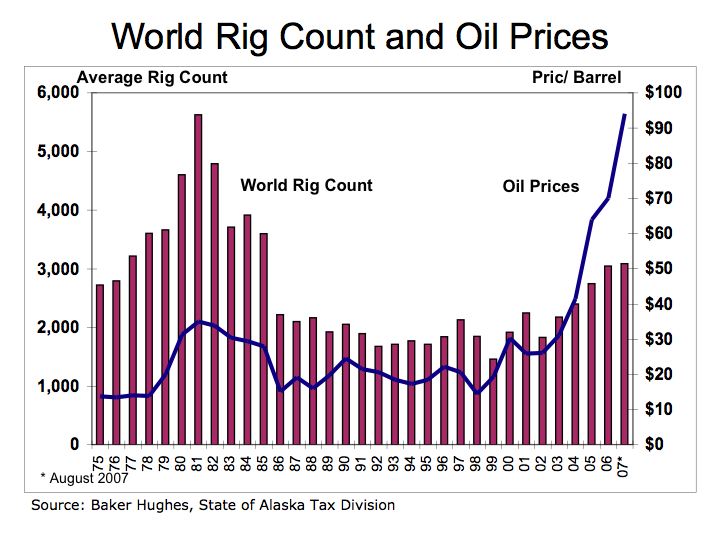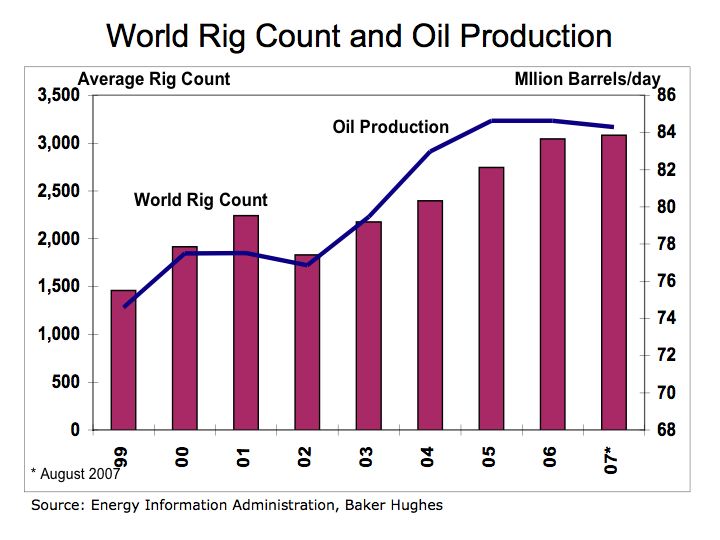Energy Shocks: Vulnerability Update
Rising oil prices have driven exploration and drilling activity, yet oil production remains anemic in comparison. Could the latest data suggest oil production is nearing a peak? With global demand expected to rise over 30% by 2030 according to a recent article in the Wall Street Journal, Handicapping the Environmental Gold Rush the latest oil production figures suggest we are indeed vulnerable to energy shocks.
High oil prices have driven demand for energy exploration and investment into oil and gas drilling rigs. In the U.S., rig count is up 181% with 1,749 rigs in operation in 2007 from 622 in 1999 according to Baker Hughes Worldwide Rig Count. Oil prices are up quite dramatically in the last few weeks with latest price above $94/barrel.
Figure 1 Worldwide Rig Count and Oil Prices

Figure 1 illustrates world-drilling rigs in comparison to oil prices. The U.S. accounts for over half the world oil drilling rigs yet our production is less than 10% of total global production. While oil prices are nearly as high as they were back in the 70’s (accounting for inflation) we are not witnessing the tremendous oil-drilling explosion as we did back then.
Part of the explanation could lie with oil production. If we look at recent data, oil production appears to be leveling off while demand is expected to increase significantly as developing countries increase their use of motor vehicles. Data from the U.S. Department of Energy (DOE) and Ward’s Communications, Ward’s World Motor Vehicle Data show that the number of motor vehicle on the road is up 48% from 1990 to 2005 with countries like China experiencing the most dramatic increase. Yet oil production over this same period is up only 27%.
Figure 2 US Rig Count and Oil Production

In the U.S., rig count is up 118% from 1999, yet petroleum production is actually down 7%. On a global basis, oil and petroleum product production increased 13% since 1999 while global rig count increased 112%. The U.S. and the rest of the world is experiencing diminishing returns on investments in oil production wile usage, led by motor vehicle consumption continues to escalate. In the U.S. more than 60% of oil consumption goes to vehicle use.
With all of the attention given to oil and hydrocarbon fuels, alternative energies are just a small fraction of our energy needs. We need to dramatically increase our research efforts into alternative energies such as solar, wind, and hydrogen fuel cells energies.
Related Posts